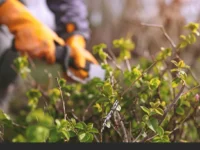When they occur, water leaks can cause significant damage. For leaks that are visible to the naked eye, such as a sink trap, shower head leak or toilet hose leak, they can be repaired without any cost. Most often, you can repair a leak on a siphon by simply tightening the coupling nuts, simply tighten by hand and, if necessary, give the nut about a quarter turn with a slip joint pliers. And you're done!
But in the case of an embedded leak, buried in the floor of the house, the problem is more complicated to solve. Beyond the urgency of the intervention of a plumbing professional to repair the leakThe question arises as to who will pay for the cost of such an intervention. Who will pay for the repair of an embedded pipe?
In the case of a condominium: who will pay for the repair of a concealed leak?
Generally speaking, the pipes for common elements such as heating, drinking water and wastewater are common parts even if they cross private lots. In the case of a condominium, the cost of repairing such a leak is the responsibility of the syndic. On the other hand, the repair costs will be paid by the owner of the apartment if they are considered as private parts.
However, it is important to point out that it is recommended to check the internal regulations of the condominium regarding the costs incurred by repairs of embedded pipes.
Even if the law of article 3 of the law 65-557 of July 10, 1965 fixing the statute of the co-ownership of the buildings stipulates that the embedded pipes are considered as common parts, the same article gives to the internal regulations of the co-ownership the possibility of fixing this type of responsibilities and thus you can find yourself in a situation where you will be called to pay the expenses of this type of embedded leaks Therefore, read the rules and regulations of the condominium carefully before contacting a emergency plumber Paris 14.
Built-in water leak: repairs are the responsibility of the owner
Are you a tenant with a water leak in the building's built-in pipes? The cost of repairs is automatically charged to the owner for all work done in the common areas of the building.
However, the tenant is responsible for the extra water consumption due to the leak. Although you will not pay for the work done by the plumber to repair the leak If you have a water leak in your house, you will be responsible for the water bills caused by the leak. You may be able to request a rebate from your water supplier in certain situations.
How does the law define a concealed water leak?
A water leak is said to be embedded when it is invisible and is buried in the floor, in a ceiling, in a wall etc. Water leaks can create very significant damage to the structure of the building and are not easy to detect. One of the most common clues to identify a water leak is the unexplained overconsumption of water in the water bill.
You can also check your water meter regularly to see if there has been an abnormal spike in water consumption. In the event that the water leak has not been identified in time, the owner or tenant will notice seepage on their wall or ceiling. In this case, it often means major plumbing, ceiling and painting work, as the leak has had time to deteriorate the home.




1 thought on “Fuite sur canalisation encastrée : qui doit payer la réparation ?”